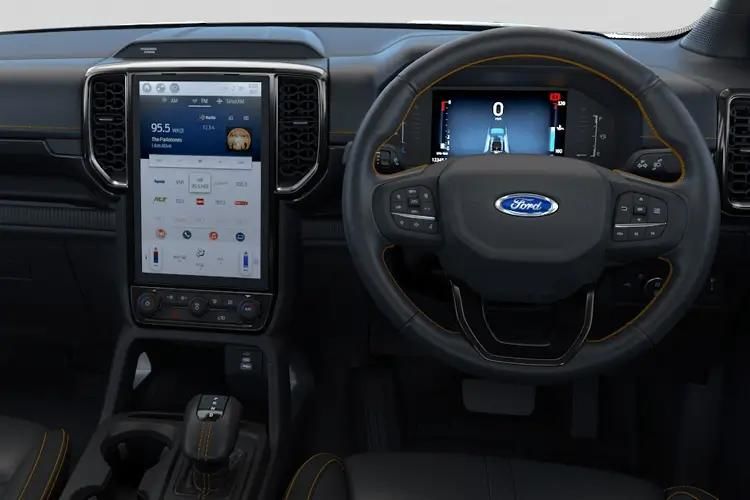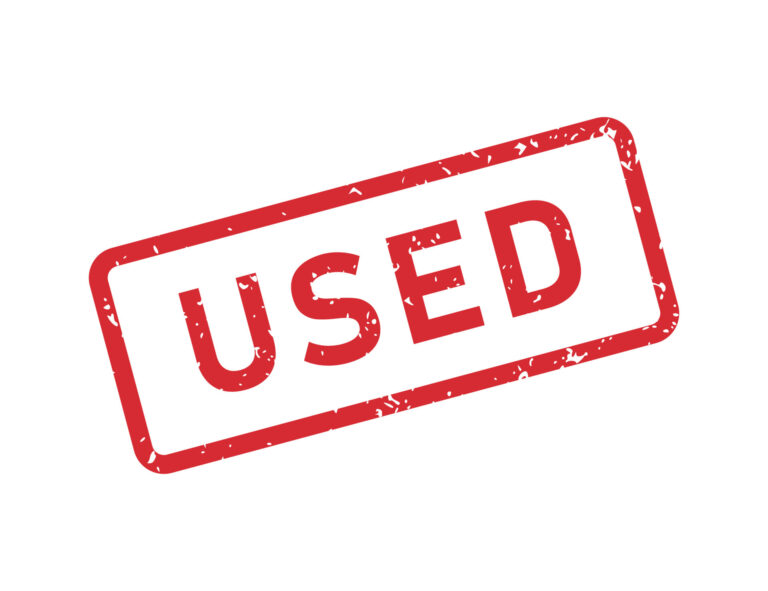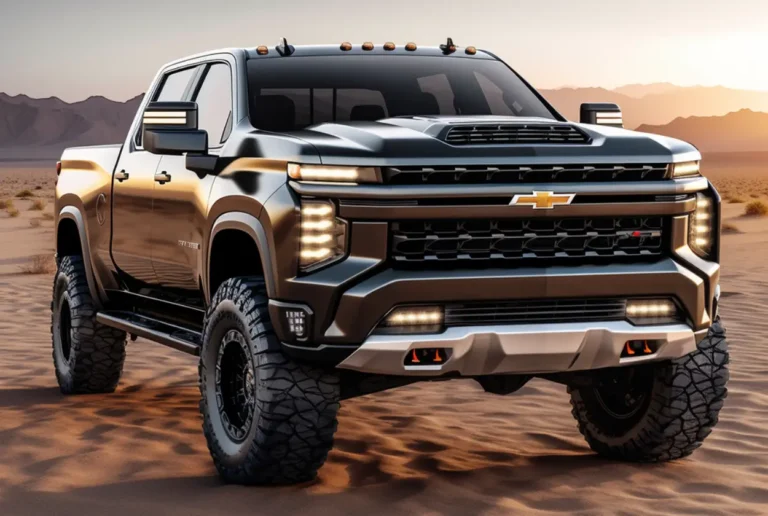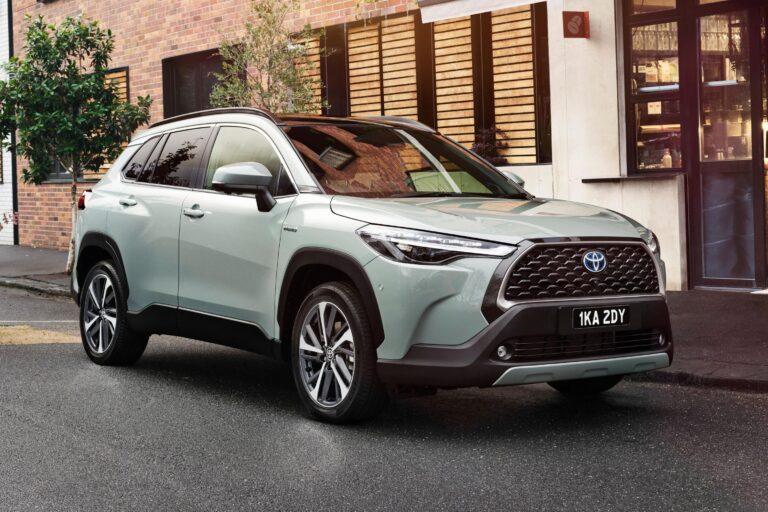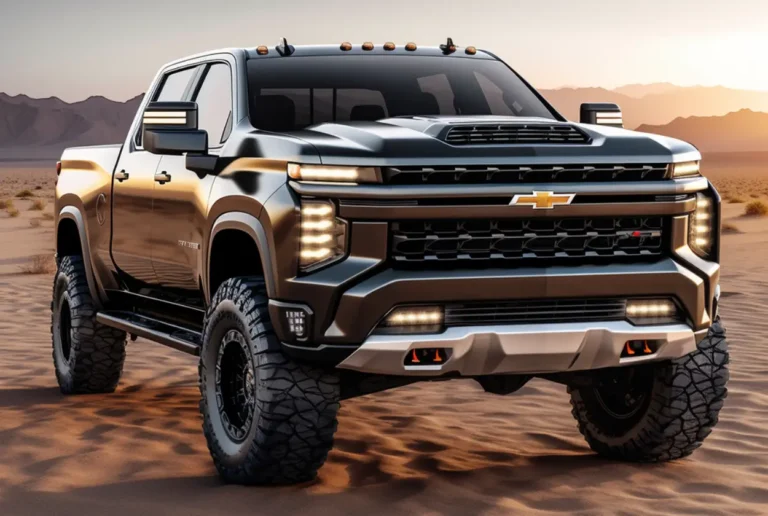Lease Pickup Truck: Your Comprehensive Guide to Driving a New Hauler for Less
Lease Pickup Truck: Your Comprehensive Guide to Driving a New Hauler for Less cars.truckstrend.com
The roar of an engine, the rugged capability, the sheer utility – pickup trucks have long been an emblem of American work ethic and adventure. But owning a new truck outright can come with a hefty price tag. Enter the Lease Pickup Truck, a increasingly popular alternative that offers the benefits of driving a brand-new hauler without the long-term commitment or high upfront costs of purchasing.
Leasing a pickup truck means you essentially pay for the depreciation of the vehicle over a set period, typically 24 to 48 months, rather than its full purchase price. This arrangement provides access to the latest models, technology, and safety features, making it an attractive option for individuals and businesses alike who need the versatility of a truck without the full financial burden of ownership. Whether you’re a contractor needing reliable transport, a weekend warrior with toys to tow, or simply someone who appreciates the utility and presence of a truck, understanding the ins and outs of leasing can unlock a world of possibilities.
Lease Pickup Truck: Your Comprehensive Guide to Driving a New Hauler for Less
Why Lease a Pickup Truck? Understanding the Benefits
Leasing a pickup truck offers a unique set of advantages that often align with specific financial goals and lifestyle needs.
- Lower Monthly Payments: This is perhaps the most significant draw. Since you’re only paying for the depreciation of the vehicle plus interest (money factor) and fees, monthly lease payments are typically much lower than loan payments for the same truck. This frees up cash flow for other expenses or investments.
- Access to New Technology & Features: Leasing allows you to drive a new truck every few years, ensuring you always have access to the latest advancements in infotainment, safety, towing technology, and fuel efficiency. This is particularly appealing in the rapidly evolving automotive landscape.
- Constant Warranty Coverage: Most lease terms align with the manufacturer’s bumper-to-bumper warranty. This means that for the duration of your lease, major repairs are typically covered, reducing unexpected out-of-pocket expenses for maintenance and breakdowns.
- Predictable Costs: Beyond your monthly payment, your primary costs are fuel and insurance. Major repairs are usually covered by warranty, and you avoid the hassle and cost of selling or trading in an older vehicle.
- Flexibility at Lease End: When your lease term concludes, you have several straightforward options: return the truck, purchase it for its predetermined residual value, or lease a new one. This flexibility allows you to adapt to changing needs.
- Potential Tax Advantages for Businesses: For businesses that use a pickup truck for work, lease payments can often be deducted as a business expense, offering significant tax benefits. Consult with a tax professional for specific guidance.

Key Considerations Before Leasing a Pickup Truck

While appealing, leasing a pickup truck isn’t without its specific considerations, especially given the nature of trucks and their typical usage.
- Mileage Limits: Lease agreements come with strict annual mileage caps (e.g., 10,000, 12,000, or 15,000 miles per year). Exceeding these limits incurs per-mile penalties (e.g., $0.15-$0.25 per mile), which can quickly add up. If you anticipate heavy usage, higher mileage leases are available but come with higher monthly payments.
- Wear and Tear Guidelines: Lessors have specific guidelines for "excessive" wear and tear. While normal wear (minor scratches, small dents) is usually permitted, significant damage, excessive tire wear, or interior stains can result in charges at lease end. Understanding these guidelines upfront is crucial.
- Early Termination Penalties: Breaking a lease early can be very costly, often requiring you to pay the remaining payments, early termination fees, and potentially the difference between the truck’s residual value and its market value.
- Insurance Requirements: Lessors typically require comprehensive and collision coverage with specific minimum liability limits to protect their asset. These requirements can sometimes be higher than what you might opt for if you owned the truck outright.
- Credit Score Impact: A strong credit score (generally 680+) is essential for securing the best lease rates (money factor). Lower scores may lead to higher payments or require a larger down payment.
- Desired Features vs. Lease Budget: Trucks often come with a wide array of trims, engine options, and packages. While exciting, each addition increases the MSRP and, consequently, your lease payment. Prioritize the features you truly need for your intended use (towing, hauling, off-roading) to stay within budget.

The Leasing Process: A Step-by-Step Guide
Navigating the lease process can seem daunting, but breaking it down into manageable steps makes it straightforward.
- Determine Your Needs: Before looking at trucks, define what you need it for.
- Payload & Towing Capacity: Will you be hauling heavy loads or towing trailers?
- Cab Style: Regular, Extended (SuperCab/Quad Cab), or Crew Cab (SuperCrew/Double Cab)?
- Bed Length: Short (5.5 ft), Standard (6.5 ft), or Long (8 ft)?
- Drivetrain: 2WD or 4WD/AWD?
- Engine: V6, V8, or a turbocharged option?
- Mileage: Accurately estimate your annual mileage to choose the appropriate lease cap.
- Research & Compare Models: Once you know your needs, research models that fit. Test drive several options to get a feel for their driving dynamics, interior comfort, and features. Popular options include the Ford F-150, Ram 1500, Chevrolet Silverado 1500, Toyota Tacoma, and Honda Ridgeline.
- Understand Lease Terminology:
- MSRP (Manufacturer’s Suggested Retail Price): The sticker price.
- Capitalized Cost (Cap Cost): The negotiated price of the vehicle, similar to the purchase price. This is what your lease payments are based on. Aim to negotiate this down!
- Residual Value: The estimated value of the truck at the end of the lease term. This is set by the lessor and is non-negotiable. A higher residual value generally means lower monthly payments.
- Money Factor (Lease Factor): This is the interest rate of your lease, expressed as a small decimal (e.g., 0.00250). Multiply it by 2400 to get the equivalent annual percentage rate (APR). A lower money factor is better.
- Acquisition Fee: An administrative fee charged by the lessor at the beginning of the lease.
- Disposition Fee: A fee charged at the end of the lease if you return the vehicle.
- Negotiate the Price (Like a Purchase): Even though you’re leasing, you can (and should) negotiate the "capitalized cost" of the truck. Treat it like you’re buying it. A lower cap cost directly translates to lower monthly payments.
- Shop for Financing: Don’t just accept the first offer. Check with multiple dealerships and even credit unions or banks that offer lease financing. Compare money factors and total lease costs.
- Review the Lease Agreement Thoroughly: This is critical. Read every line of the contract. Pay close attention to:
- Monthly payment, term, and mileage allowance.
- Total due at signing (down payment, first month’s payment, fees).
- Residual value and purchase option price.
- Early termination clauses and fees.
- Wear and tear guidelines.
- Take Delivery: Once satisfied, sign the paperwork and drive off in your new leased pickup truck!
Types of Pickup Trucks & Popular Lease Models
The pickup truck market is diverse, offering options for every need and budget.
- Mid-Size Pickups: Smaller, more maneuverable, and often more fuel-efficient than full-size trucks.
- Popular Lease Models: Toyota Tacoma, Ford Ranger, Chevrolet Colorado, Honda Ridgeline, Nissan Frontier.
- Ideal for: Urban driving, light hauling, recreational use, those who don’t need maximum towing.
- Light-Duty (Half-Ton) Full-Size Pickups: The most popular segment, offering a balance of capability, comfort, and everyday usability.
- Popular Lease Models: Ford F-150, Ram 1500, Chevrolet Silverado 1500, GMC Sierra 1500, Toyota Tundra.
- Ideal for: Daily driving, significant towing (boats, campers), hauling moderate loads, family use.
- Heavy-Duty (Three-Quarter & One-Ton) Pickups: Built for serious work, offering maximum towing and payload capacities.
- Popular Lease Models: Ford F-250/F-350 Super Duty, Ram 2500/3500, Chevrolet Silverado 2500/3500 HD, GMC Sierra 2500/3500 HD.
- Ideal for: Commercial use, heavy equipment hauling, large RVs, professional contractors. Note: Leasing HD trucks is less common due to their higher price point and specialized use, but still an option for businesses.
- Electric Pickups: An emerging segment, offering instant torque and lower running costs.
- Popular Lease Models: Ford F-150 Lightning, Rivian R1T (availability may vary).
- Ideal for: Tech-forward users, those seeking lower emissions, potentially lower fuel costs, impressive acceleration.
Lease End Options: What Happens Next?
As your lease approaches its conclusion, you’ll have a few choices. Understanding them beforehand helps you plan.
- Return the Vehicle: This is the most common option. You simply return the truck to the dealership. Be sure to address any excessive wear and tear and stay within your mileage limits to avoid extra charges. A disposition fee may apply.
- Purchase the Vehicle: If you love your truck and its residual value is attractive (or market value has increased significantly), you can buy it outright for the predetermined residual value stated in your lease agreement. You can also finance this purchase.
- Lease a New Vehicle: Many lessees choose to trade in their current leased truck for a new lease on a different model or a newer version of the same truck. Dealerships often offer incentives for returning lessees.
- Extend the Lease: In some cases, you might be able to extend your current lease for a few extra months if you need more time or are waiting for a new model to become available. This is typically done on a month-to-month basis.
Overcoming Challenges & Maximizing Your Lease
To ensure a positive leasing experience, be proactive and informed.
- Managing Mileage: Track your mileage regularly. If you’re trending over, consider buying extra miles from the lessor at a reduced rate before lease end, or adjusting your driving habits.
- Maintaining the Vehicle: Adhere to the manufacturer’s recommended service schedule. Keep records of all maintenance. Proper maintenance helps prevent mechanical issues and ensures the truck is in good condition at return.
- Understanding Excess Wear & Tear Charges: Take photos of the vehicle before returning it. Address minor cosmetic issues (small dents, scratches) before return, as fixing them yourself might be cheaper than the lessor’s charges. Consider purchasing a wear-and-tear waiver at the beginning of the lease, if offered.
- Negotiating a Better Deal: Always negotiate the capitalized cost and try to get the lowest possible money factor. Research current incentives and compare offers from multiple dealerships.
- Exploring Lease Swaps: Websites like LeaseTransfer.com or SwapALease.com allow you to take over someone else’s lease or transfer your lease to another individual. This can be a solution if your needs change or you need to exit a lease early.
Sample Illustrative Lease Pickup Truck Price Table
Disclaimer: The prices in this table are purely illustrative examples and are subject to significant variation based on location, specific trim levels, current manufacturer incentives, dealership negotiations, individual credit scores, lease term, and mileage limits. Actual lease offers will differ.
| Make/Model | Trim Level (Example) | Sample Monthly Payment (Excl. Tax) | Sample Due at Signing (Excl. Fees) | Lease Term (Months) | Mileage Cap (Annual) | Sample Residual Value (at end) |
|---|---|---|---|---|---|---|
| Mid-Size Trucks | ||||||
| Toyota Tacoma | SR5 Double Cab 4×2 | $380 – $450 | $2,500 – $3,500 | 36 | 12,000 | 65% – 70% |
| Ford Ranger | XLT SuperCrew 4×4 | $400 – $480 | $2,800 – $3,800 | 36 | 12,000 | 60% – 65% |
| Chevrolet Colorado | LT Crew Cab 4×2 | $370 – $440 | $2,400 – $3,400 | 36 | 10,000 | 63% – 68% |
| Light-Duty Full-Size Trucks | ||||||
| Ford F-150 | XL SuperCrew 4×2 | $450 – $550 | $3,000 – $4,500 | 36 | 12,000 | 60% – 65% |
| Ram 1500 | Big Horn Quad Cab 4×2 | $430 – $530 | $2,900 – $4,300 | 36 | 10,000 | 62% – 67% |
| Chevrolet Silverado 1500 | Custom Double Cab 4×2 | $440 – $540 | $2,950 – $4,400 | 36 | 12,000 | 61% – 66% |
| Electric Pickups | ||||||
| Ford F-150 Lightning | Pro (Base) | $600 – $750 | $4,000 – $6,000 | 36 | 10,000 | 55% – 60% |
Always obtain a detailed quote from a dealership that includes all fees, taxes, and the money factor before committing to a lease agreement.
Frequently Asked Questions (FAQ) about Leasing a Pickup Truck
Q1: Can I use a leased pickup truck for towing and hauling?
A1: Yes, absolutely, as long as you stay within the truck’s stated towing and payload capacities and the terms of your lease agreement. Be mindful that heavy use might accelerate wear and tear, and exceeding mileage limits will incur charges.
Q2: What happens if I go over my mileage limit?
A2: You will be charged a per-mile penalty for every mile over your agreed-upon limit. These charges typically range from $0.15 to $0.25 per mile and can add up quickly. If you anticipate exceeding your limit, it’s often cheaper to purchase additional miles upfront from the lessor during the lease term.
Q3: Is insurance more expensive for a leased truck?
A3: Generally, yes. Lessors require comprehensive and collision coverage, often with higher liability limits, to protect their asset. This can result in higher premiums compared to what you might choose for a vehicle you own outright.
Q4: Can I customize or modify a leased truck?
A4: Most lease agreements prohibit permanent modifications. Minor, easily reversible changes like floor mats, bed liners, or tonneau covers are usually fine. Anything that alters the truck’s original condition (e.g., lift kits, performance upgrades, drilling holes) will likely need to be reversed at your expense before return, or you’ll face charges.
Q5: Is leasing better than buying for a pickup truck?
A5: It depends on your individual needs and financial situation.
- Leasing is often better if: You want lower monthly payments, drive a new truck every few years, prefer consistent warranty coverage, or use the truck for business deductions.
- Buying is often better if: You drive a lot of miles, plan to own the truck for many years, want to fully customize it, or prefer building equity.
Q6: What credit score do I need to lease a pickup truck?
A6: While requirements vary, a good to excellent credit score (typically 680 FICO or higher) is generally needed to qualify for the best lease rates and promotions. Lower scores may still qualify but might result in a higher money factor (interest rate) or require a larger down payment.
Conclusion
Leasing a pickup truck offers a compelling pathway to enjoying the power, utility, and modern features of a new vehicle without the long-term financial commitment of ownership. From lower monthly payments and constant warranty coverage to the flexibility of driving a new model every few years, the benefits are clear for many drivers and businesses.
However, a successful lease hinges on a thorough understanding of the terms: accurately estimating your mileage, adhering to wear and tear guidelines, and carefully reviewing the contract. By doing your research, negotiating wisely, and planning for your lease end options, you can ensure that leasing a pickup truck is a convenient, cost-effective, and highly satisfying way to get behind the wheel of the vehicle you need. Make an informed decision, and your next pickup could be just a lease agreement away.
